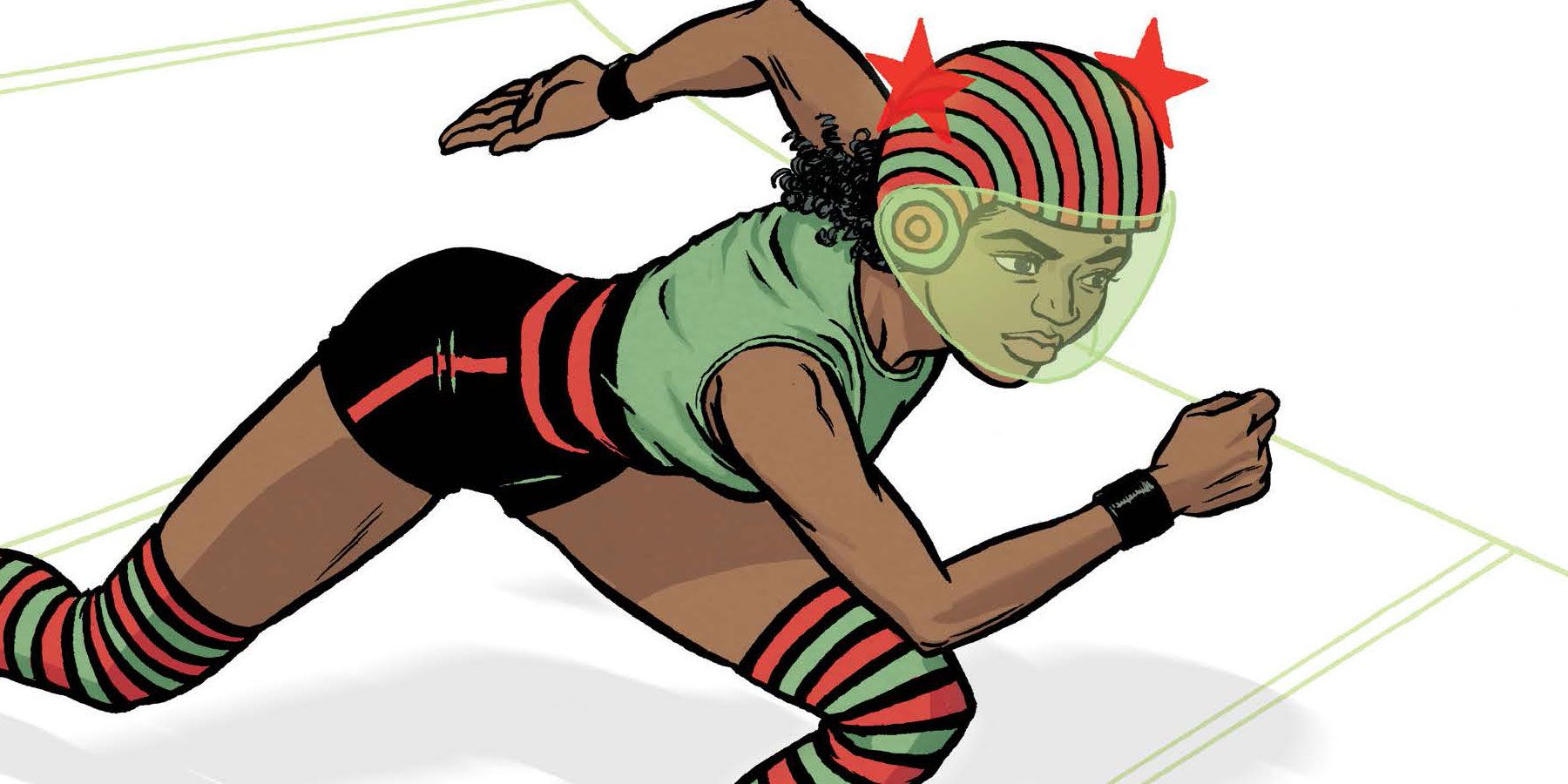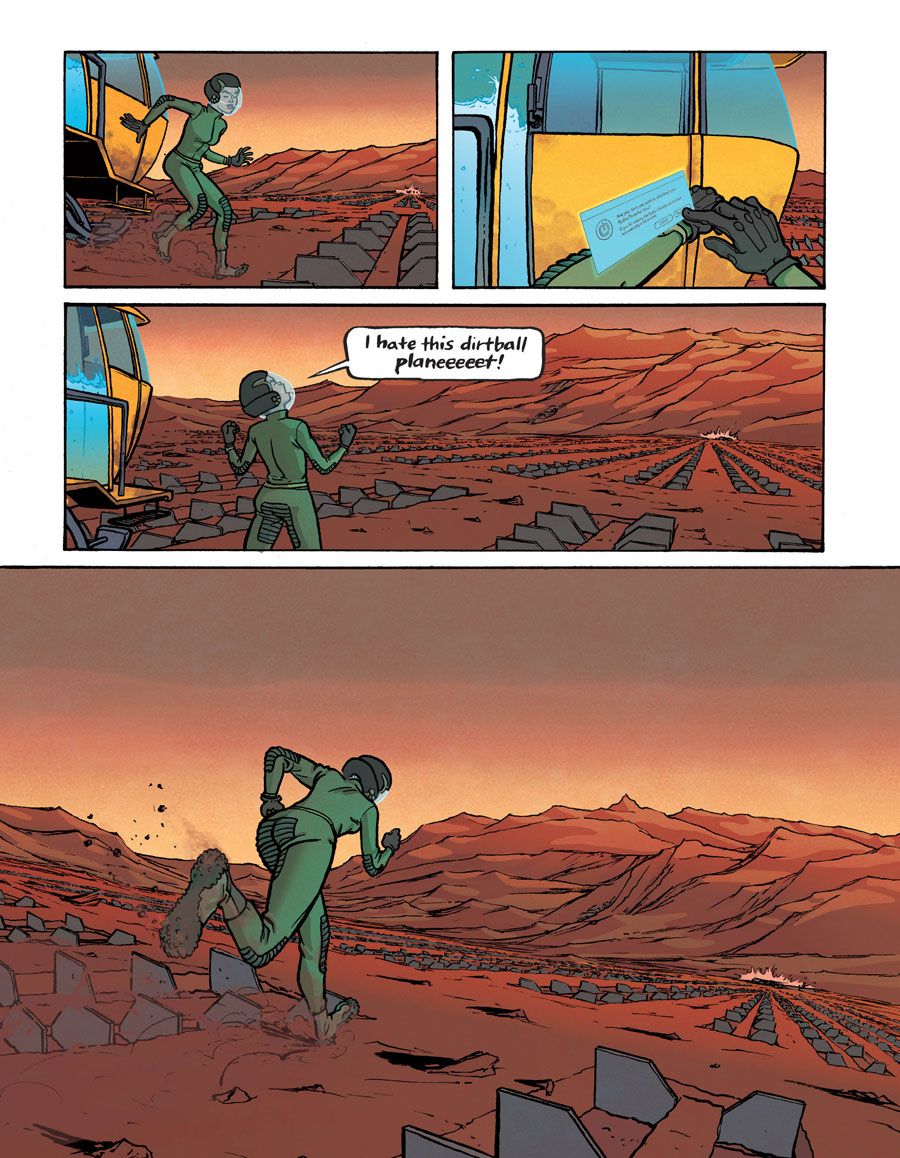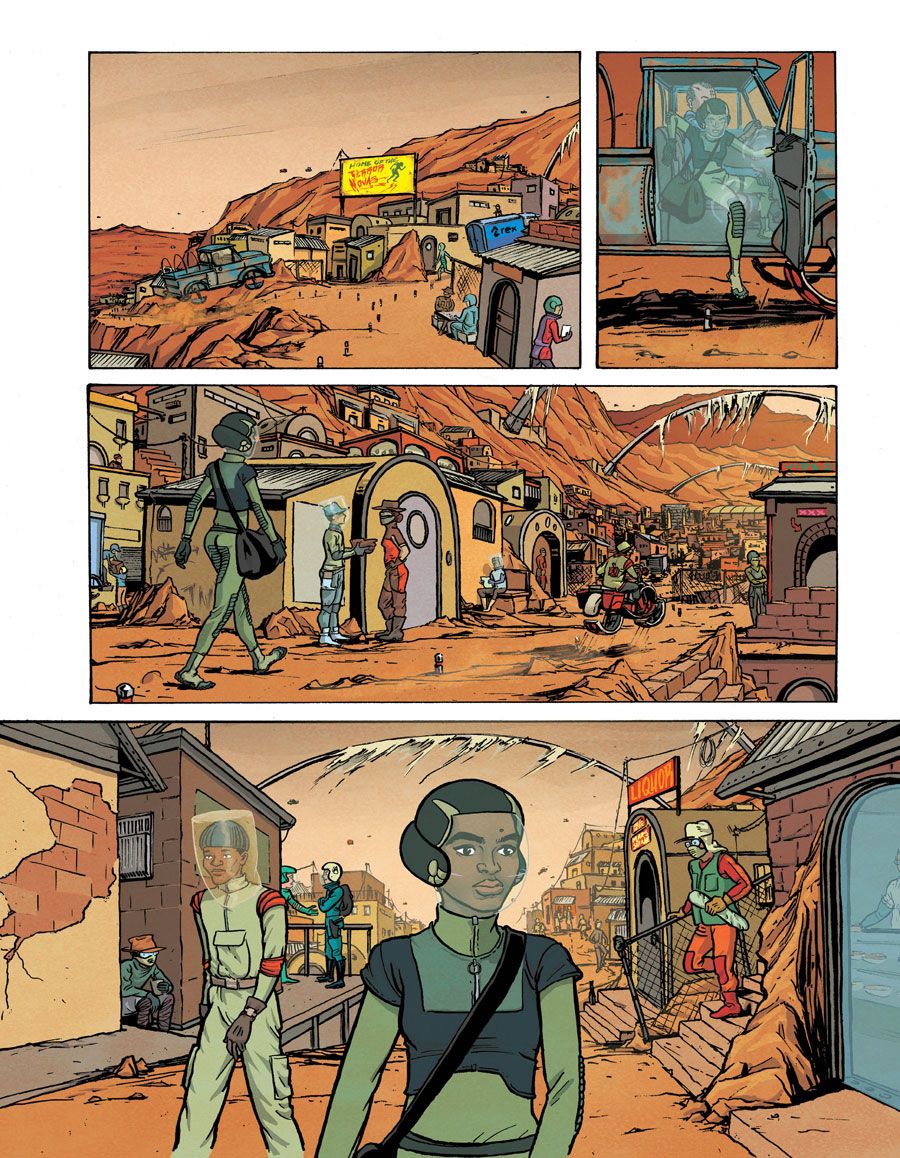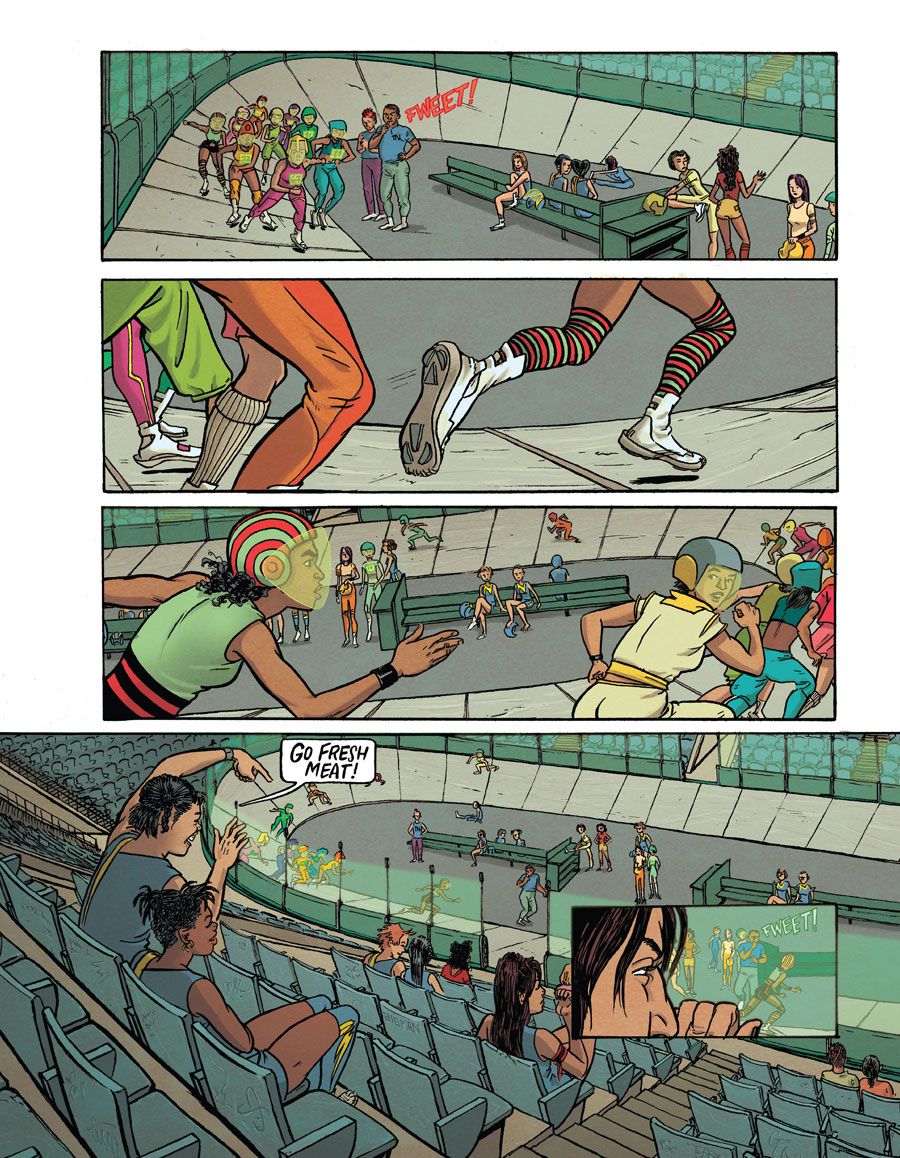Jessica Abel is well respected for her acclaimed and sophisticated comics work, including “La Perdida,” “Mirror, Window,” and “Artbabe.” Her latest book, on sale now from Papercutz, “Trish Trash: Rollergirl of Mars” kicks off a young adult trilogy of not only finding one’s self, but figuring out one’s place in a culture.
Trish, living a hardscrabble life on the Mars colony, dreams of becoming a rollergirl, while her family worries more about putting food on the table. Of course, the conflict between Trish’s personal ambition and her Martian upbringing, the very notion of what it means to be Martian, get even more complicated when she discovers a wounded and supposedly mythic native Martian.
RELATED: Abel Gets Meta With "Out On The Wire," Reflects on Comics Representation Problem
CBR spoke with Abel about the educational origins of “Trish Trash,” the book’s “untranslation” (it was initially published in France while its author attended an artists residence there), and the excitement of roller derby.
CBR: Jessica, what got the story of “Trish Trash” rolling for you?
Jessica Abel: I’ve actually written a blog post about it, because it’s kind of funny. The initial spark for the story came ages ago, like ten years ago. I was doing an illustration for “Drawing Words and Writing Pictures.” It was for the character chapter; we had an activity where you pick random characteristics, throw them together, and invent a character out of that. I had Matt give me those cards, those characteristics, and that’s what became Trish. The very first version of her is in “Drawing Words and Writing Pictures” as an illustration. The two characters I came up with were Trish and Seven-Legged Martian. It was just silly.
But she really stuck with me. A few months later, I started working on the story.
Rollergirls are a powerful image of strong women. Are you a fan? Or you just liked the image of it?
Yeah, I’m a fan of derby. I mean, I was interested in it when I began developing the story, but I don’t know if I was a fan before I started work on the book. I learned a lot about it as I was developing it.
Was there a moment when derby cemented itself as the central metaphor for Trish’s struggle to find and assert herself? Or it was most about that first drawing taking on life and dimension?
She was a rollergirl in that very first image. That was always a piece of it. To me, now that the book and story have evolved so much, it’s almost weirdly left over. I see this parallel to “Buffy the Vampire Slayer.” On the face of it, the concept is ridiculous. When I first heard that title, I was like, “Are you kidding me? You want me to go with this?” But the show went beyond that premise really quickly. The silliness of juxtaposing the blonde cheerleader and this vampire slayer job was probably where it all stems from, and it was only after getting interested in her as a character that, I’m sure, Joss Whedon made it something so much bigger. “What does this have to say about the nature of adolescence.” I’m sure he didn’t understand that whole thing initially. It’s similar with me.
Trish’s encounter with and aid to a native Martian remains in the background throughout the first book, but is it safe to say that this plot will begin to take a more prominent role as the series continues to unfold?
Yeah. She’s becomes much bigger character later. The indigenous Martian Trish encounters does come back and ties into Trish’s struggle with what it means that there are indigenous people on Mars, which has not been widely known. That fact helps Trish think about what it means to be Martian, and to realize that the stakes are much bigger than her little derby dreams. That not only indigenous Martians, but human Martians, are living in a world where this corporate force is trying to control all the rules of the game.
The question of her personal identity and how it fits in with her cultural identity was very present and very interesting throughout the first book.
That’s what I’m really interested in. That’s what the book is about to me - this idea of where her struggle and her family’s struggle intersects with the struggle of the “Martys” - the human Martians, and what role she plays in that.
You recently returned from a four-year artists’ residency at La Maison des Auteurs in Angoulême. “Trish Trash” was begun there and initially published in France, correct?
Yes.
Many authors have books later published in another language. Was it strange in any way to see this one first appear in another tongue?
It was interesting because it definitely gave me a lot of insight into how the French comics industry works. That was very interesting information, because producing a book doesn’t happen the same way it does in the American system. And there are good sides and bad sides to the French system as well. It’s a complex question.
It’s nice to bring back into English. Of course, it was written in English, so it’s sort of being “untranslated” more than anything else. But I was able to work closely with the translator for the French version. I speak French, so I was able to refine it and make it reflect the spirit of the book. I’m proud of how it came out there.
You were at SVA for a long time and co-authored the creating comics textbook “Writing Pictures and Drawing Words.” Are you going back to teaching again?
I am teaching. I’m at the Pennsylvania Academy of Fine Arts. I’m the head of the illustration department. There is no comics program there, so that’s a thing that we’re looking at - not developing a program, but putting in some programming and some classes in narrative. But at the moment, I’m teaching illustration.
You’ve got a full plate with teaching and “Trish Trash,” but anything else in the works?
No. I’m just working on the third “Trish Trash” now. The second one is in the can, and we’re doing a lot of production work on that now.
“Trish Trash: Rollergirl of Mars” is now available from Papercutz.




